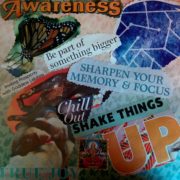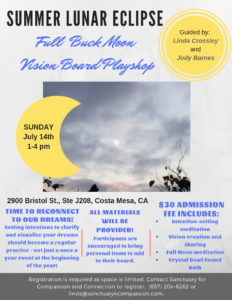5 Intention-setting Ideas for Allergy Season
|
As we move into Spring, the air begins to warm and Mother Nature begins to blossom once again. And here in southern California, after our deliciously wet winter, the flowers are already in full bloom! For many, this season can bring tears to their eyes just thinking about the flowers, not from their simple beauty but because of the misery they bring to the body due to seasonal allergies. If you experience an increase in nose and ear congestion, sneezing, and/or itchy eyes and/or throat during this season, I offer 5 intention-setting ideas below for a more natural approach to reducing the suffering that accompanies such allergies: |
- Honey. Consider adding honey to your daily food intake. And not just any honey – it must be LOCAL honey. Bees create honey from their immediate environment and it contains trace amounts of the environmental allergens that your body may be trying to flush out through your allergic symptoms. So, by adding honey either to your tea, smoothie, or oatmeal in the morning, over time you will build up your immunity to such substances and with a whole lot less pain than allergy shots!
- Bee Pollen. Bee pollen is similar to honey and offers an alternative to how you ingest these substances. You might consider adding bee pollen to your salads or other fresh fruit or vegetables.
- Nasal Cleansing. Using a neti pot to rinse your nasal passages with a saline solution has been shown to not only relieve sinus symptoms due to allergies, but research has also shown using a neti pot can prevent several upper respiratory conditions, such as the common cold and seasonal allergies. Not sure how to start such a practice, I recommend purchasing the Health And Yoga stainless steel pot that comes with a DVD for guidance. If you still don’t think this is a practice you would want to try, consider using a saline nasal spray on a daily basis to wash away the irritants. Personally, I got over my fear of pouring water up my nose and I no longer experience allergy symptoms and I believe I have successfully warded off a couple of head colds after traveling on airplanes!
- Apple Cider Vinegar. Amongst many other uses, Apple Cider Vinegar has been shown to support your immune system, facilitate lymphatic system drainage, and reduce mucous production. If the taste is too hard to take, try diluting one tablespoon in a glass of water with lemon juice and drink this concoction several times a day to relieve seasonal allergy symptoms.
- Nettle Leaf. Adding nettle leaf to a tea has been shown to act as an anti-inflammatory and naturally blocks the body’s ability to produce histamine, which are the chemicals the immune system produces to get rid of something in the body it does not like and cause the symptoms of seasonal allergies.













